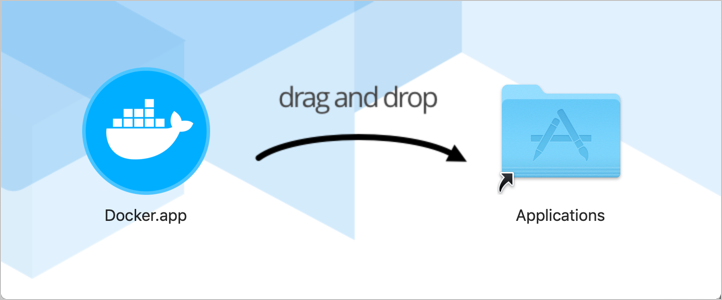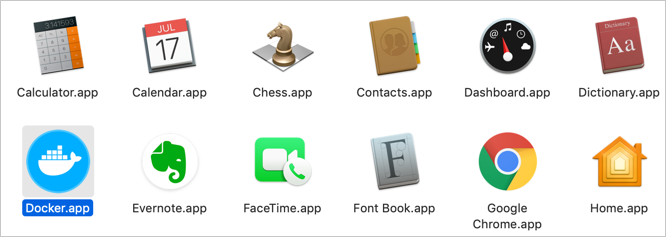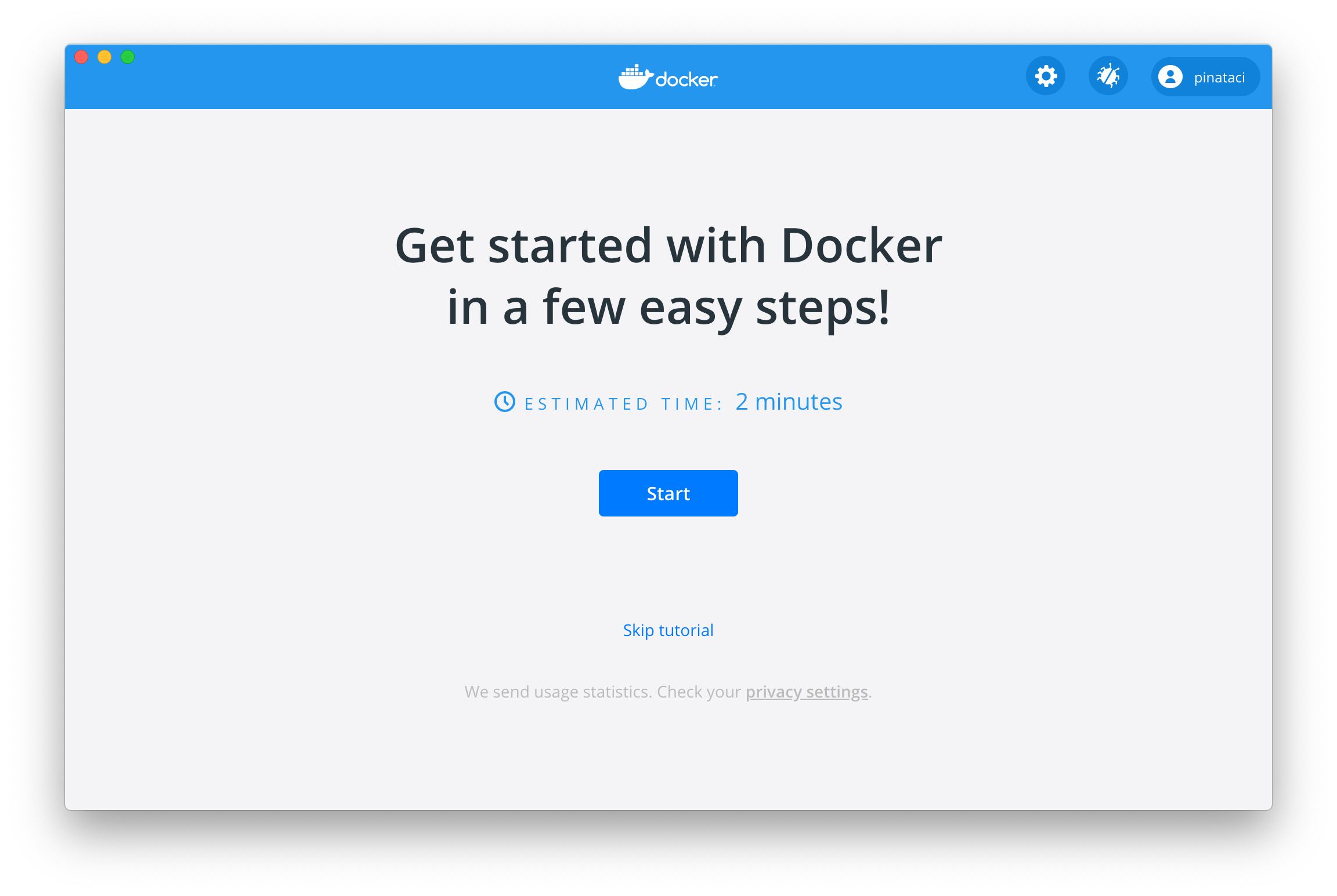Install Docker Desktop on Mac
Estimated reading time: 7 minutes
Update to the Docker Desktop terms
Commercial use of Docker Desktop in larger enterprises (more than 250 employees OR more than $10 million USD in annual revenue) now requires a paid subscription. The grace period for those that will require a paid subscription ends on January 31, 2022. Learn more.
Welcome to Docker Desktop for Mac. This page contains information about Docker Desktop for Mac system requirements, download URLs, instructions to install and update Docker Desktop for Mac.
Download Docker Desktop for Mac
System requirements
Your Mac must meet the following requirements to install Docker Desktop successfully.
Mac with Intel chip
-
macOS must be version 10.15 or newer. That is, Catalina, Big Sur, or Monterey. We recommend upgrading to the latest version of macOS.
If you experience any issues after upgrading your macOS to version 10.15, you must install the latest version of Docker Desktop to be compatible with this version of macOS.
Note
Docker supports Docker Desktop on the most recent versions of macOS. That is, the current release of macOS and the previous two releases. As new major versions of macOS are made generally available, Docker stops supporting the oldest version and supports the newest version of macOS (in addition to the previous two releases). Docker Desktop currently supports macOS Catalina, macOS Big Sur, and macOS Monterey.
-
At least 4 GB of RAM.
-
VirtualBox prior to version 4.3.30 must not be installed as it is not compatible with Docker Desktop.
Mac with Apple silicon
-
Beginning with Docker Desktop 4.3.0, we have removed the hard requirement to install Rosetta 2. There are a few optional command line tools that still require Rosetta 2 when using Darwin/AMD64. See the Known issues section. However, to get the best experience, we recommend that you install Rosetta 2. To install Rosetta 2 manually from the command line, run the following command:
$ softwareupdate --install-rosetta
For more information, see Docker Desktop for Apple silicon.
Install and run Docker Desktop on Mac
-
Double-click
Docker.dmgto open the installer, then drag the Docker icon to the Applications folder.
-
Double-click
Docker.appin the Applications folder to start Docker. In the example below, the Applications folder is in “grid” view mode.
-
The Docker menu (
 ) displays the Docker Subscription Service Agreement window. It includes a change to the terms of use for Docker Desktop.
) displays the Docker Subscription Service Agreement window. It includes a change to the terms of use for Docker Desktop.Here’s a summary of the key changes:
- Our Docker Subscription Service Agreement includes a change to the terms of use for Docker Desktop
- It remains free for small businesses (fewer than 250 employees AND less than $10 million in annual revenue), personal use, education, and non-commercial open source projects.
- It requires a paid subscription for professional use in larger enterprises.
- The effective date of these terms is August 31, 2021. There is a grace period until January 31, 2022 for those that will require a paid subscription to use Docker Desktop.
- The existing Docker Free subscription has been renamed Docker Personal and we have introduced a Docker Business subscription .
- The Docker Pro, Team, and Business subscriptions include commercial use of Docker Desktop.
-
Click the checkbox to indicate that you accept the updated terms and then click Accept to continue. Docker Desktop starts after you accept the terms.
Important
If you do not agree to the terms, the Docker Desktop application will close and you can no longer run Docker Desktop on your machine. You can choose to accept the terms at a later date by opening Docker Desktop.
For more information, see Docker Desktop License Agreement. We recommend that you also read the Blog and FAQs to learn how companies using Docker Desktop may be affected.
Quick start guide
If you’ve just installed the app, Docker Desktop launches the Quick Start Guide. The tutorial includes a simple exercise to build an example Docker image, run it as a container, push and save the image to Docker Hub.

Congratulations! You are now successfully running Docker Desktop. Click the Docker menu ( ) to see
Preferences and other options. To run the Quick Start Guide on demand, select the Docker menu and then choose Quick Start Guide.
) to see
Preferences and other options. To run the Quick Start Guide on demand, select the Docker menu and then choose Quick Start Guide.
Updates
When an update is available, Docker Desktop displays an icon on the Docker menu to indicate the availability of a newer version. Additionally, the Software Updates section in Preferences (Settings on Windows) also notifies you of any updates available to Docker Desktop. You can choose to download the update right away, or click the Release Notes option to learn what’s included in the updated version.
Starting with Docker Desktop 4.2.0, the option to turn off the automatic check for updates is available for users on all Docker subscriptions, including Docker Personal and Docker Pro. For more information, see Software Updates.
Docker Subscription Service Agreement
Beginning on August 31, 2021, you must agree to the Docker Subscription Service Agreement to continue using Docker Desktop. Read the Blog and the Docker subscription FAQs to learn more about the changes.
Click Download update When you are ready to download the update. This downloads the update in the background. After downloading the update, click Update and restart from the Docker menu. This installs the latest update and restarts Docker Desktop for the changes to take effect.
When Docker Desktop starts, it displays the Docker Subscription Service Agreement window. Read the information presented on the screen to understand how the changes impact you. Click the checkbox to indicate that you accept the updated terms and then click Accept to continue.
Important
If you do not agree to the terms, the Docker Desktop application will close and you can no longer run Docker Desktop on your machine. You can choose to accept the terms at a later date by opening Docker Desktop.
Docker Desktop starts after you accept the terms.
Uninstall Docker Desktop
To uninstall Docker Desktop from your Mac:
- From the Docker menu, select Troubleshoot and then select Uninstall.
- Click Uninstall to confirm your selection.
Note
Uninstalling Docker Desktop destroys Docker containers, images, volumes, and other Docker related data local to the machine, and removes the files generated by the application. Refer to the back up and restore data section to learn how to preserve important data before uninstalling.
Where to go next
- Getting started provides an overview of Docker Desktop on Mac, basic Docker command examples, how to get help or give feedback, and links to other topics about Docker Desktop on Mac.
- Docker Desktop for Apple silicon for detailed information about Docker Desktop for Apple silicon.
- Troubleshooting describes common problems, workarounds, how to run and submit diagnostics, and submit issues.
- FAQs provide answers to frequently asked questions.
- Release notes lists component updates, new features, and improvements associated with Docker Desktop releases.
- Get started with Docker provides a general Docker tutorial.
- Back up and restore data provides instructions on backing up and restoring data related to Docker.